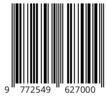The Trauma and Collective Memory Analyses of a Novel Titled “Semua Untuk Hindia” by Iksaka Banu
Abstract
Keywords
Full Text:
PDFReferences
Abrar, A. N. (1999). Prospek berita pemilu dalam membentuk memori kolektif khalayak. Jurnal Ilmu Sosial Dan Ilmu Politik, 3(1). https://doi.org/10.22146/jsp.11144
Alfehaid, L. S., Qotineh, A., Alsuhebany, N., Alharbi, S., & Almodaimegh, H. (2018). The perceptions and attitudes of undergraduate healthcare sciences students of feedback: a qualitative study. Health Professions Education, 4(3), 186–197. https://doi.org/10.1016/j.hpe.2018.03.002
Antropologi, D. (2016). Dari Masa Lalu ke Masa Kini : Memori Kolektif , Konstruksi Negara dan Normalisasi Anti-Komunis. 01(01), 30–43.
Assmann, J. A. N. (2008). Communicative and Cultur al Memor y. 109–118.
Banu, I. (1964). Semua untuk Hindia. In Kepustakaan Populer Gramedia. https://opac.perpusnas.go.id/DetailOpac.aspx?id=889931
Banu, I. (2024). Semua Untuk Hindia (Paperback). Kepustakaan Populer Gramedia (KPG). https://www.jstor.org/stable/26937814
Berger, S., & Olick, J. K. (2020). A Cultural History of Memory, Volumes 1-6. Bloomsbury Academic.
Breman, J. (2020). Colonialism and Its Racial Imprint. Sojourn: Journal of Social Issues in Southeast Asia, 35(3), 463–492. https://www.jstor.org/stable/26937814
Budiawan. (2004). Mematahkan Pewarisan Ingatan: Wacana Anti-Komunis dan Politik Rekonsiliasi Pasca-Soeharto (H. (Introduction) Setiawan (Ed.); Cet. 2). Elsam (Lembaga Studi dan Advokasi Masyarakat).
Caruth, C. (1995). Trauma: explorations in memory. In C. Caruth (Ed.), Trauma: Explorations in memory. (pp. ix, 277–ix, 277). Johns Hopkins University Press.
Craps, S. (2013). Postcolonial witnessing : trauma out of bounds. 170.
Crespo, M., & Fernández-Lansac, V. (2016). Memory and narrative of traumatic events: A literature review. Psychological Trauma : Theory, Research, Practice and Policy, 8(2), 149–156. https://doi.org/10.1037/tra0000041
Cribb, R. B. (1990). The Indonesian Killings of 1965-1966: Studies from Java and Bali. Centre of Southeast Asian Studies, Monash University.
Doolan, P. (2021). Collective Memory and the Dutch East Indies. In Collective Memory and the Dutch East Indies. https://doi.org/10.5117/9789463728744
Farisi, M. I., & Purwantiningsih, A. R. Y. (2020). The September 30 th Movement and Aftermath in Indonesian Collective Memory and Revolution : A Lesson for the Nation. 11(April), 103–128.
Foote, K. E. (1990). To remember and forget: Archives, memory, and culture. American Archivist, 53(3), 378–392. https://doi.org/10.17723/aarc.53.3.d87u013444j3g6r2
Furnivall, J. S. (1947). Capitalism in Indonesia. Pacific Affairs, 20(1), 66–69. http://www.jstor.org/stable/2752417
Gabor, M. R. (2010). Descriptive methods of data analysis for marketing data theoretical and practical considerations. Management and Marketing, 5(1), 119–134.
Gibson, J. (2005). Interpreting Words, Interpreting Worlds. The Journal of Aesthetics and Art Criticism, 64(4), 439–450. https://doi.org/10.1111/j.1540-594X.2006.00222.x
Guan, L., & Wang, Q. (2022). Does Sharing Memories Make Us Feel Closer? The Roles of Memory Type and Culture. Journal of Cross-Cultural Psychology, 53(3–4), 344–361. https://doi.org/10.1177/00220221211072809
Gus’ ap Setiawan, A., & Puspita, D. (2022). Trauma on the main character in get out movie by Jordan Peele: psychological approach. Linguistics and Literature Journal, 3(1), 69–78. https://doi.org/10.33365/llj.v3i1.1629
Halbwachs, M. (1950). Space and the collective memory. In The collecive memory (pp. 1–15).
Hasanah, N., Sutiyono, A., & Wahyuningsih, S. (2022). Improving students’ reading comprehension through note taking strategy at seventh gradeof upt smp negeri 14 Bandar Lampung in academic year of 2022/2023. Journal of English Education Students (JEES), 4(1 SE-Articles), 1–5. https://www.stkippgribl.ac.id/eskripsi/index.php/jees/article/view/415
Hirsch, M. (2008). The generation of postmemory. Poetics Today, 29(1), 103–128. https://doi.org/10.1215/03335372-2007-019
Husna, F. S., & Kuswoyo, H. (2022). The Portrayal of post traumatic stress disorder as seen in the main character in the woman in the window novel. Linguistics and Literature Journal, 3(2), 122–130. https://doi.org/10.33365/llj.v3i2.2073
Kenny, M. G. (1999). A Place for Memory: The Interface between Individual and Collective History. Comparative Studies in Society and History, 41(3), 420–437.
LaCapra, D. (2014). Writing History, Writing Trauma. Johns Hopkins University Press. https://doi.org/10.56021/9781421414003
Landsberg, A. (2004). Prosthetic Memory: The Transformation of American Remembrance in the Age of Mass Culture. Columbia University Press.
Landsberg, A. (2009). Memory, Empathy, and the Politics of Identification. International Journal of Politics, Culture, and Society, 22(2), 221–229. http://dx.doi.org/10.1007/s10767-009-9056-x
Malau, J. F. I., Simaremare, J. A., Simorangkir, N. A., & Sihotang, E. D. (2024). Analysis of the Form and Function of Conjunctions in the Novel “Sang Pemimpi” by Andrea Hirata. Dinamika Bahasa Dan Budaya, 19(1), 11–20.
McNally, R. J. (2005). Debunking myths about trauma and memory. Canadian Journal of Psychiatry. Revue Canadienne de Psychiatrie, 50(13), 817–822. https://doi.org/10.1177/070674370505001302
Miles, M. B., Huberman, M. a, & Saldana, J. (2014). Drawing and verying conclusions. Qualitative Data Analysis: A Methods Sourcebook, 275–322. https://doi.org/January11,2016
Misztal, B. A. (2003). Theories of social remembering.
Nassaji, H. (2015). Qualitative and descriptive research: data type versus data analysis. Language Teaching Research, 19(2), 129–132. https://doi.org/10.1177/1362168815572747
Newton, K. (2006). Performing literary interpretation (pp. 475–485). https://doi.org/10.1093/oso/9780199291335.003.0031
Nünning, V., & Nünning, A. (2020). Methods of textual analysis in literary studies. WVT Wissenschaftlicher Verlag Trier.
On collective form. (2015). In M. Janowitz & L. A. Coser (Eds.), Docomomo Journal (Issue 53). https://doi.org/10.52200/53.a.c4gwdaq3
Poddar, P., Patke, R. S., Jensen, L., Beverley, J., Forsdick, C., Fraiture, P.-P., Ben-Ghiat, R., Dh’aen, T., Kundrus, B., Monasterios, E., & Rothwell, P. (Eds.). (2008). A Historical Companion to Postcolonial Literatures - Continental Europe and its Empires. Edinburgh University Press. http://www.jstor.org/stable/10.3366/j.ctt1g0b6vw
Ratnasari, A., Wahab, W. M., & Muhri. (2024). Postkolonialisme dalam antologi cerpen semua untuk hindia karya iksaka banu:kajian teori homi k. bhabha. Sebasa: Jurnal Pendidikan Bahasa Dan Sastra Indonesia, 181–197.
Ricklefs, M. C. (2001). A History of Modern Indonesia since c . 1200 (3rd ed.).
Russida, C. A. (2024). Memori dan trauma dalam dua novel sastra Indonesia-Tionghoa kontemporer. 52(1), 154–164. https://doi.org/10.26499/wdprw.v52i1.1666
Saffold, J. R. (2018). Stories Not to Pass On. MELUS, 43(4), 217–234. https://www.jstor.org/stable/26566184
Schick, K. (2011). Acting out and working through: trauma and (in)security. Review of International Studies, 37(4), 1837–1855. https://doi.org/DOI:10.1017/S0260210510001130.
Sofia, M., & Asriningsari, A. (2024). Refleksi Sosial Dalam Kumpulan Cerpen Semua Untuk Hindia Karya Iksaka Banu. 12(01), 67–78. http://dx.doi.org/10.26877/sasindo.v12i1.18375
Syadiah, A. D., Hartati, D., & Suntoko, S. (2023). Citra perempuan dalam novel Tutur Dedes Doa Dan Kutukan karya Amalia Yunus dan rekomendasi sebagai bahan ajar pada siswa kelas XII. Innovative: Journal Of Social Science Research, 3(3), 6357–6371. https://j-innovative.org/index.php/Innovative/article/view/2857
Violi, P. (2017). Spaces of memory and trauma: a cultural semiotic perspective (K. Bankov & P. Cobley (Eds.); pp. 185–204). De Gruyter Mouton. https://doi.org/doi:10.1515/9781501503825-010
Whitehead, A. (2004). Trauma Fiction. Edinburgh University Press.
Wilson, D. (2018). Relevance theory and literary interpretation. In Reading Beyond the Code: Literature and Relevance Theory (pp. 185–204). https://doi.org/10.1093/oso/9780198794776.003.0011
Yoesoef, M. (2010). Plays in Japanese Occupation Period (1942—1945): Some Notes about Indonesian People in the War Era. Makara Human Behavior Studies in Asia, 14(1), 11. https://doi.org/10.7454/mssh.v14i1.566
DOI: https://doi.org/10.31002/transformatika.v9i1.9621
DOI (PDF): https://doi.org/10.31002/transformatika.v9i1.9621.g3533
Refbacks
- There are currently no refbacks.
Copyright (c) 2025 Muna Alfadlilah Una

This work is licensed under a Creative Commons Attribution-ShareAlike 4.0 International License.


_(2)_.png)
.png)
_.png)
.png)
.png)















